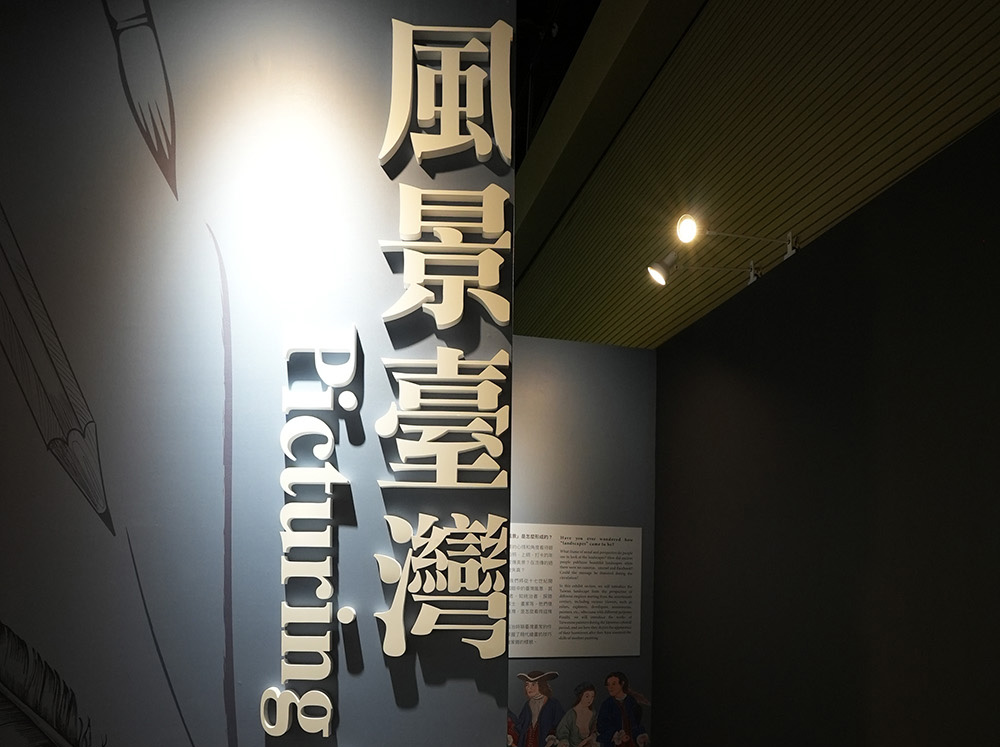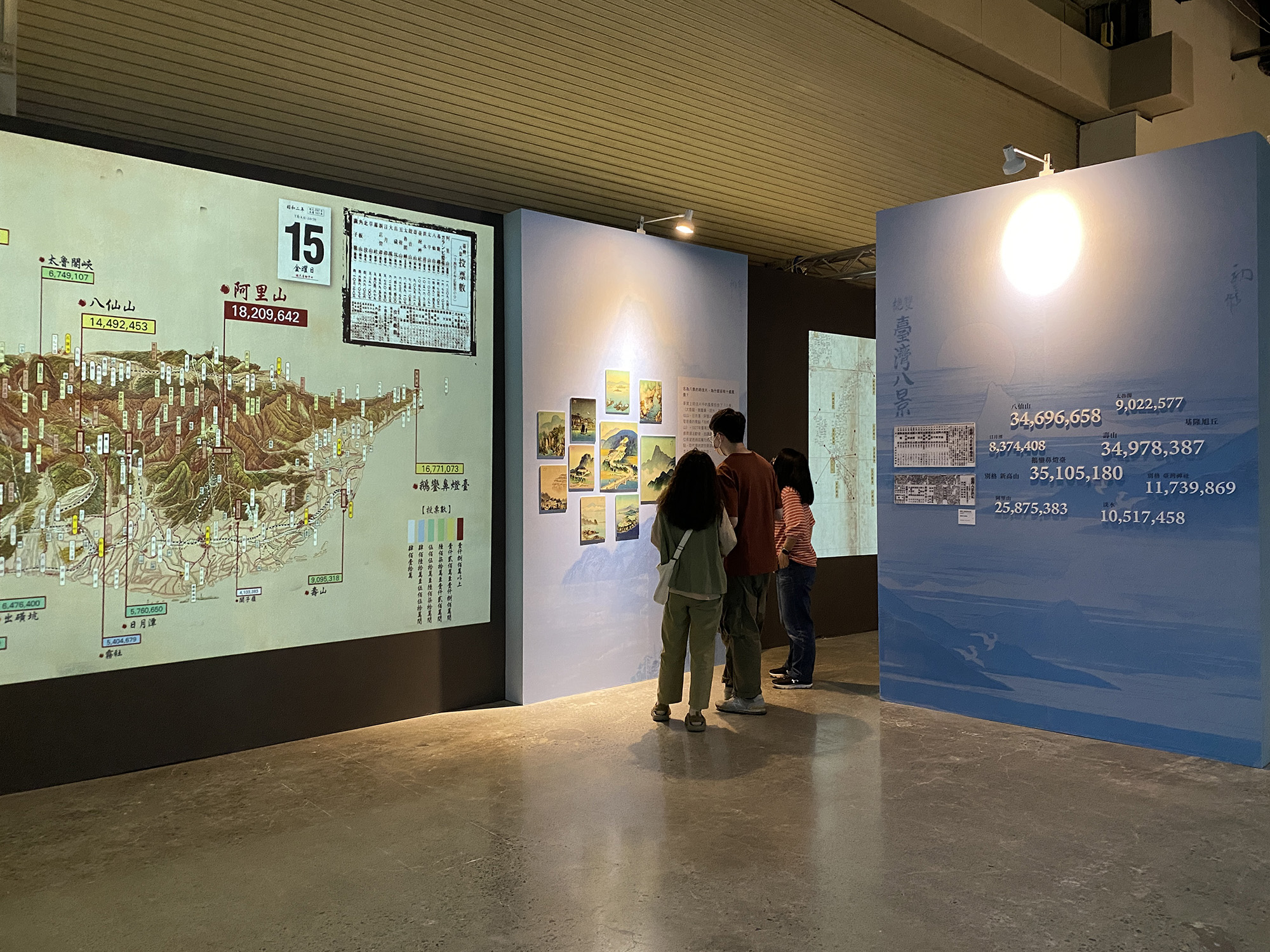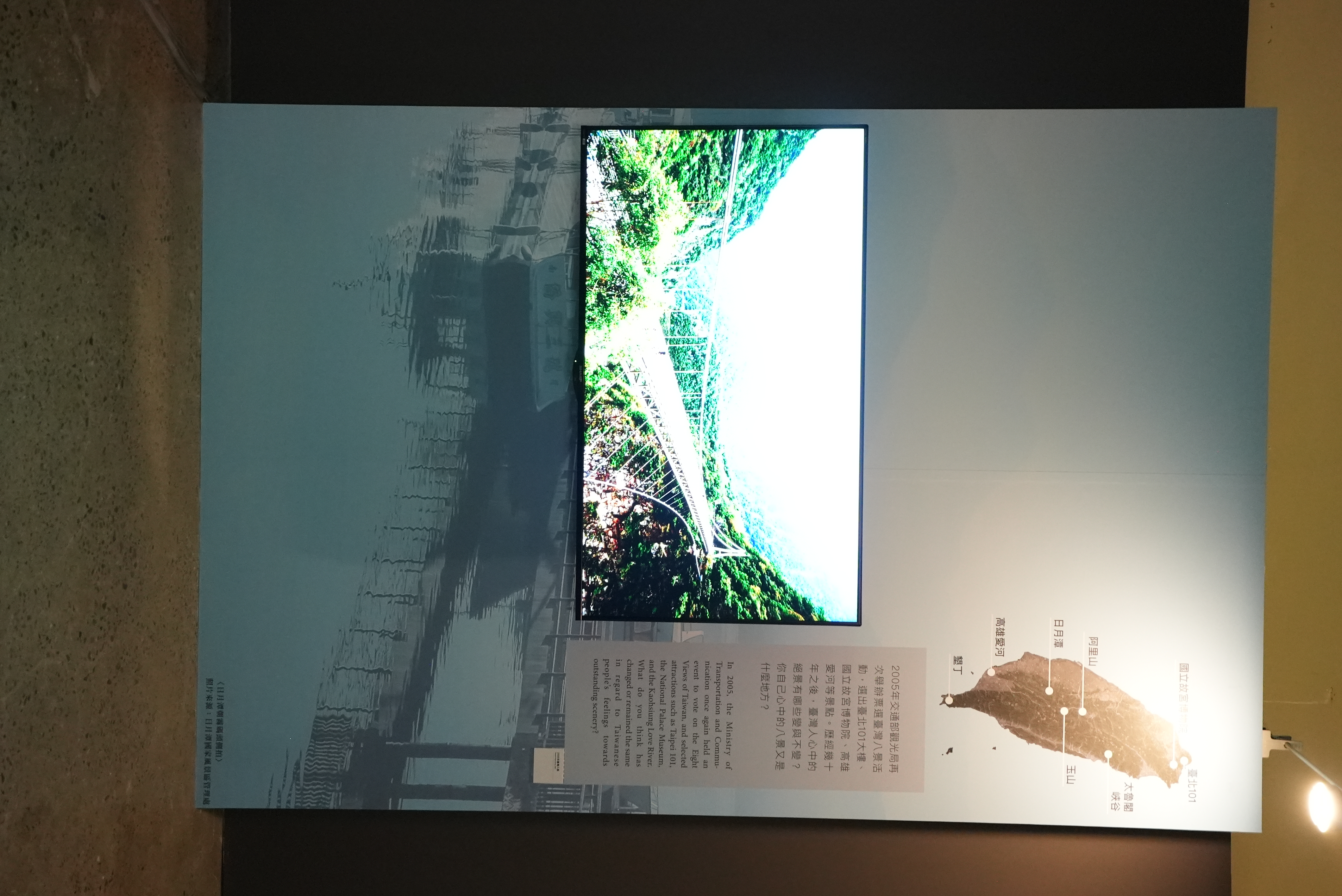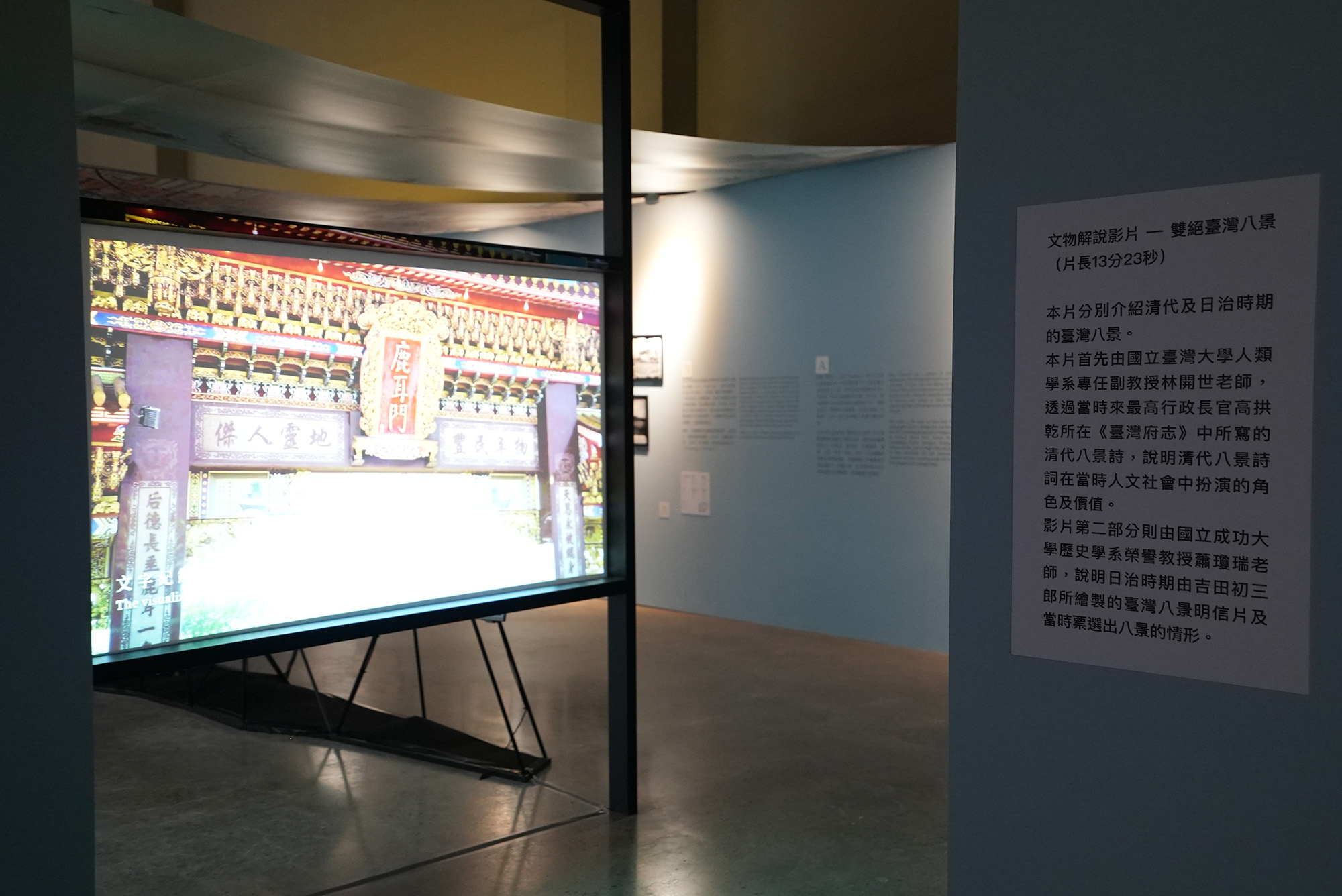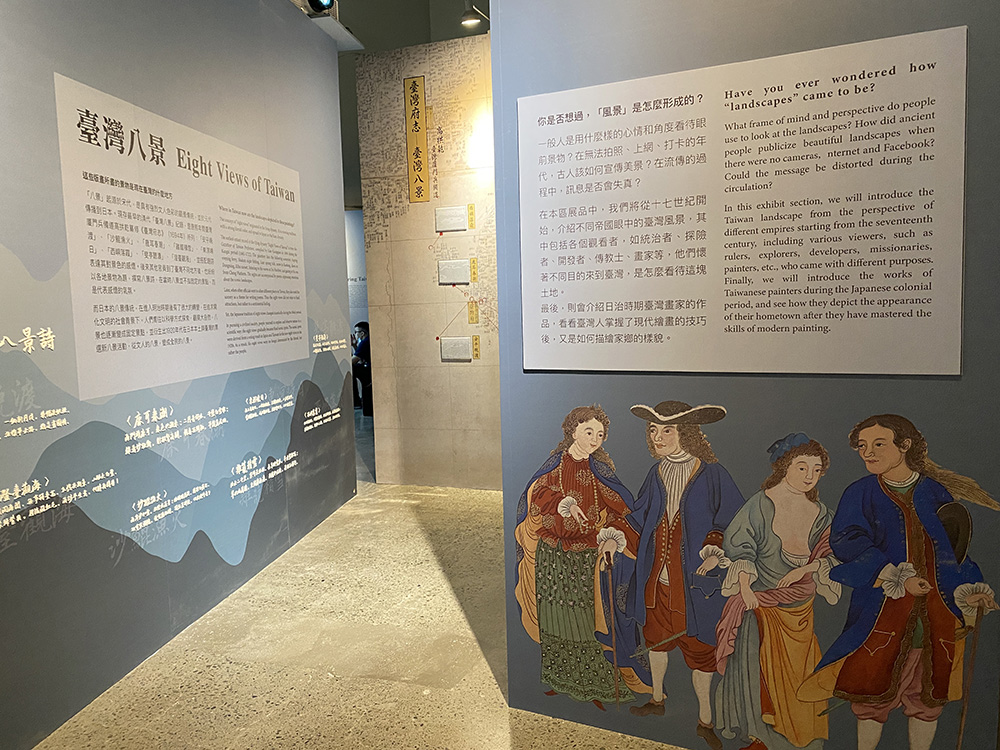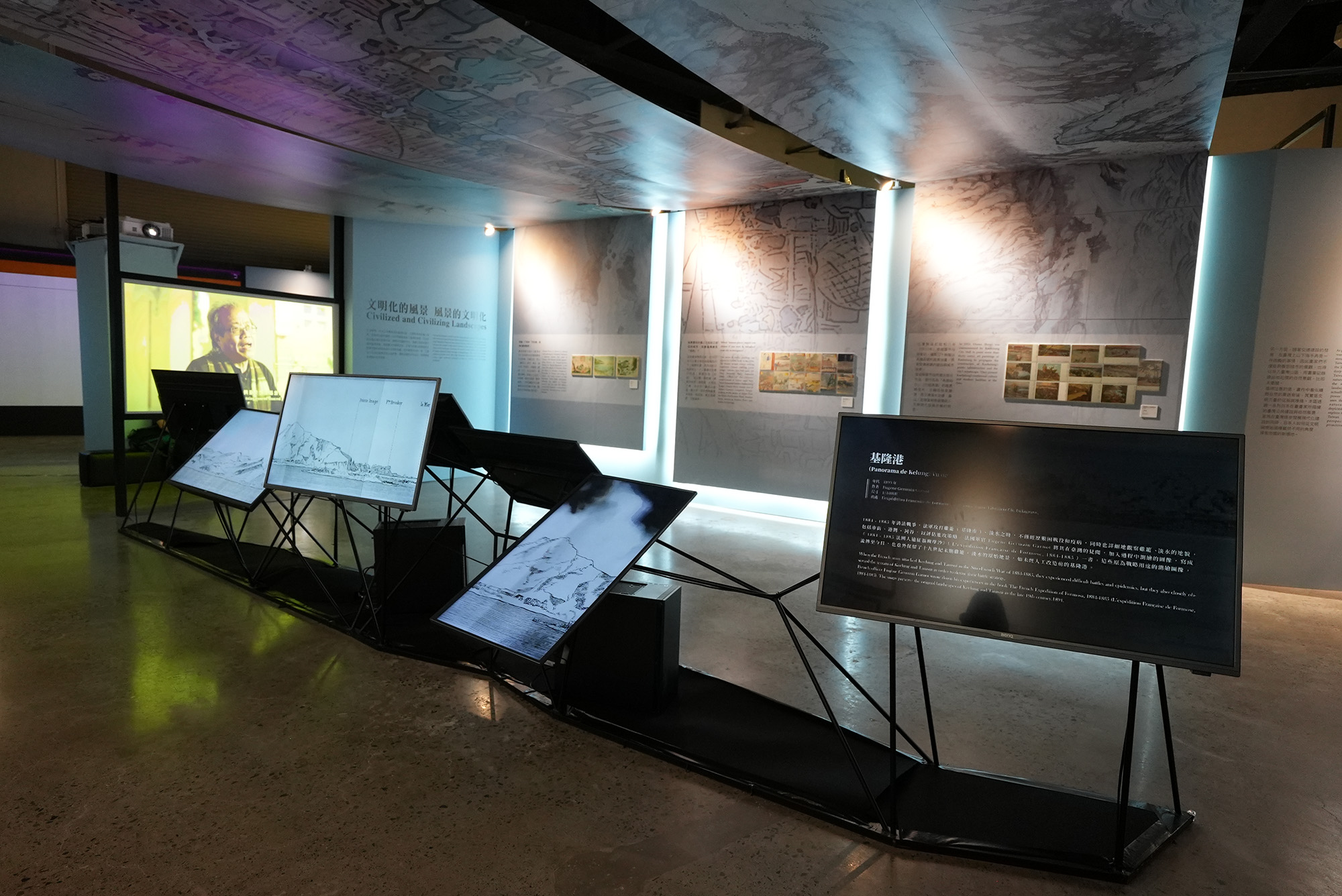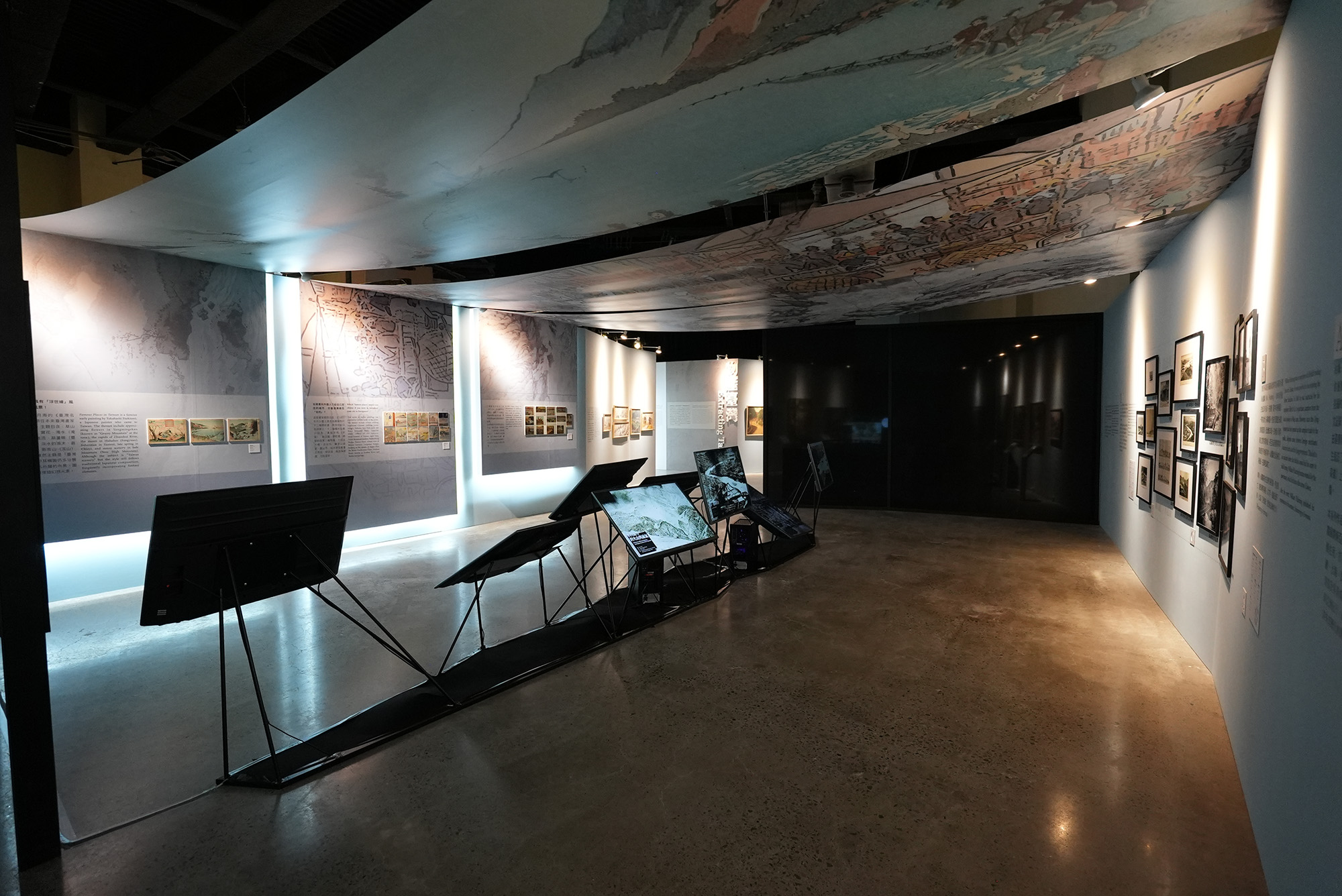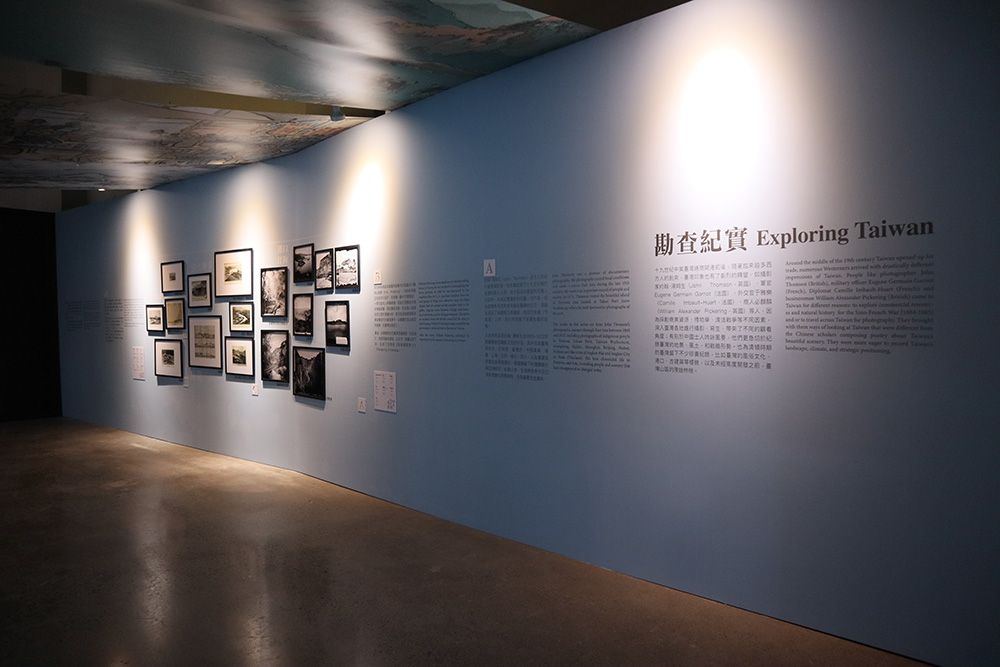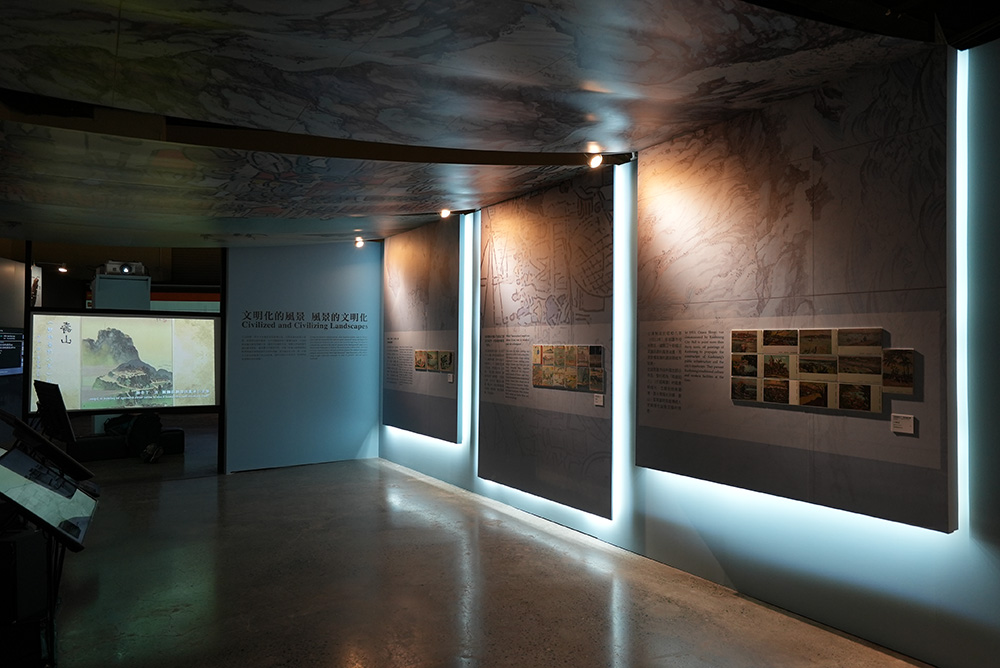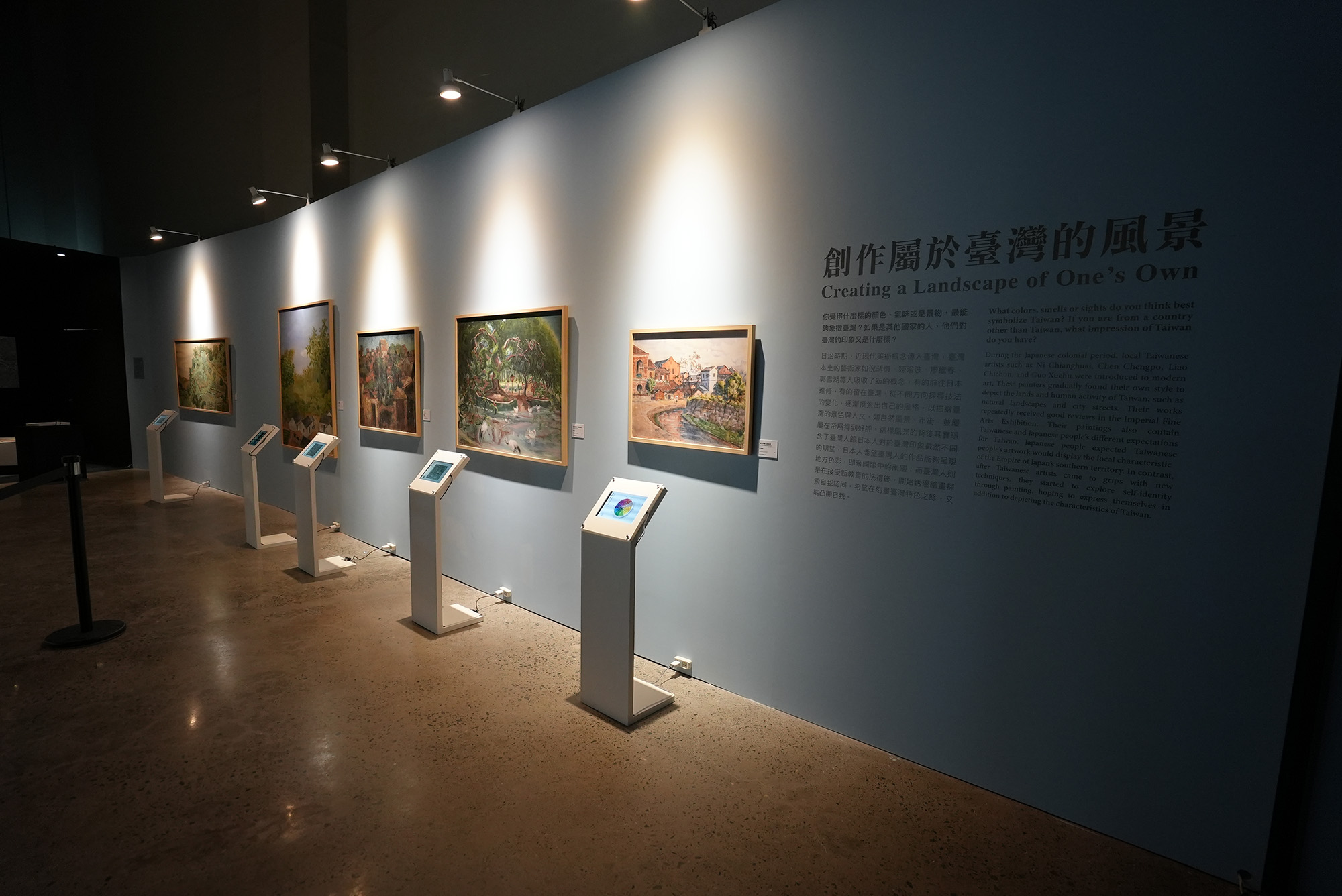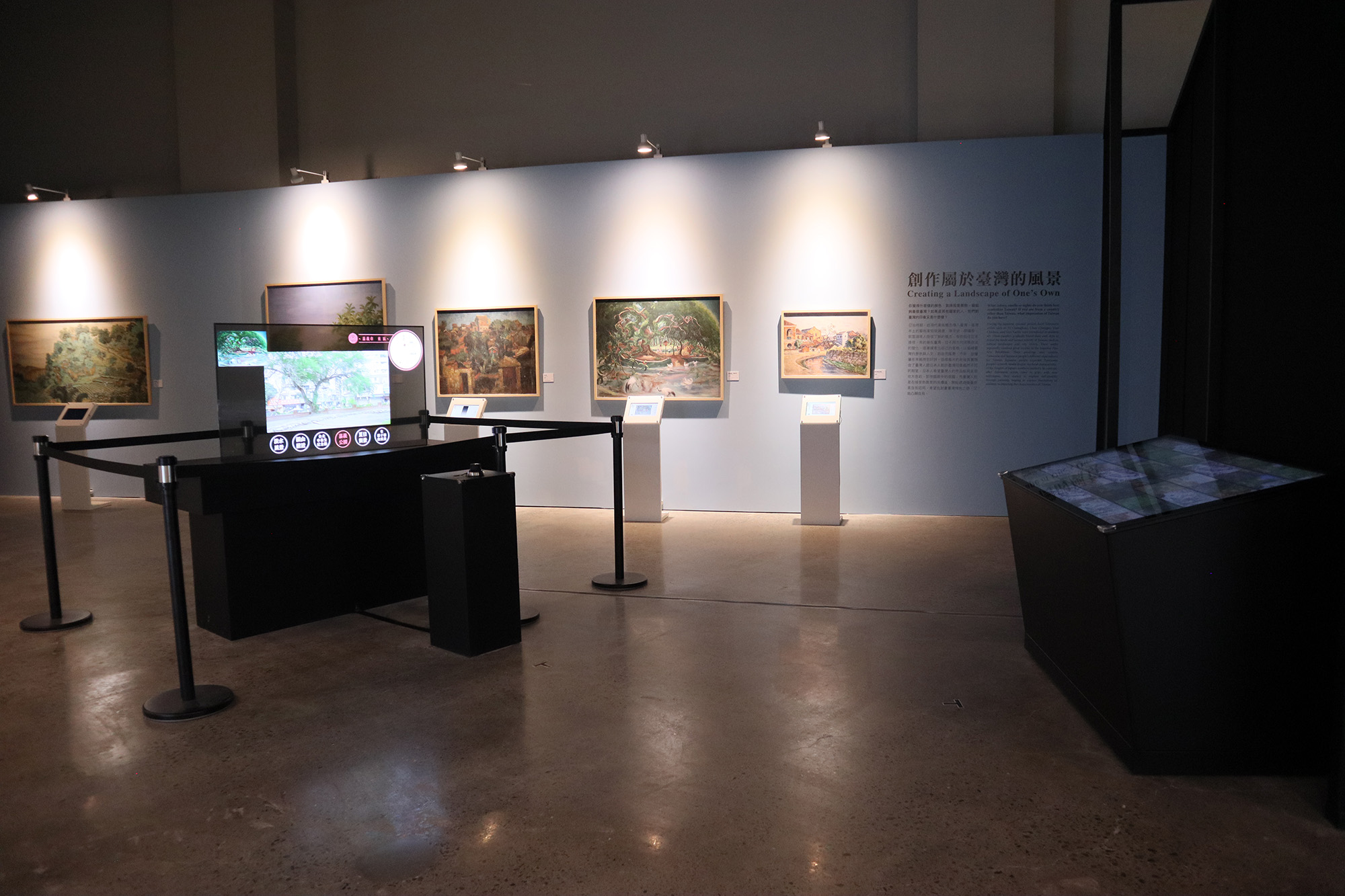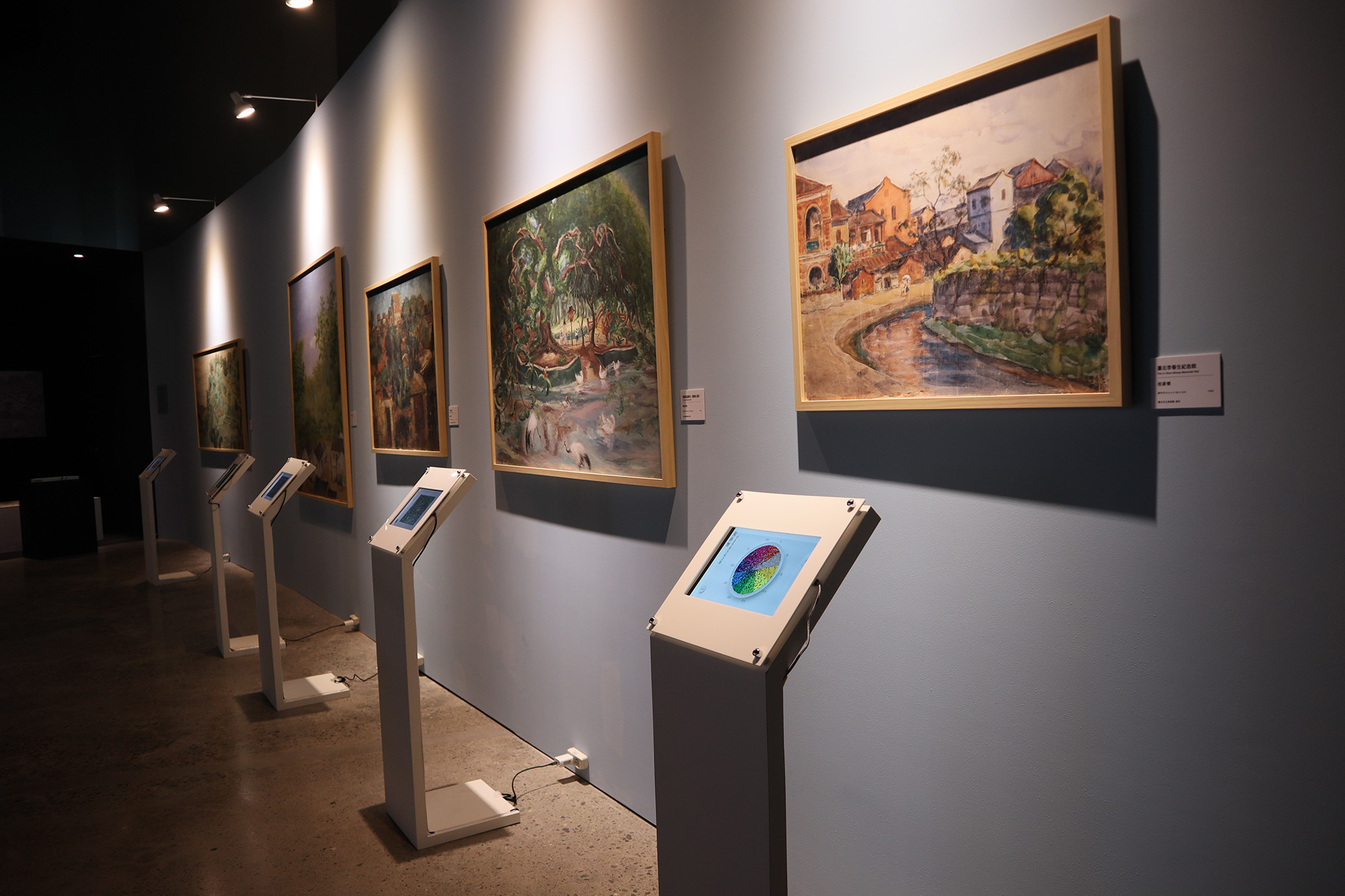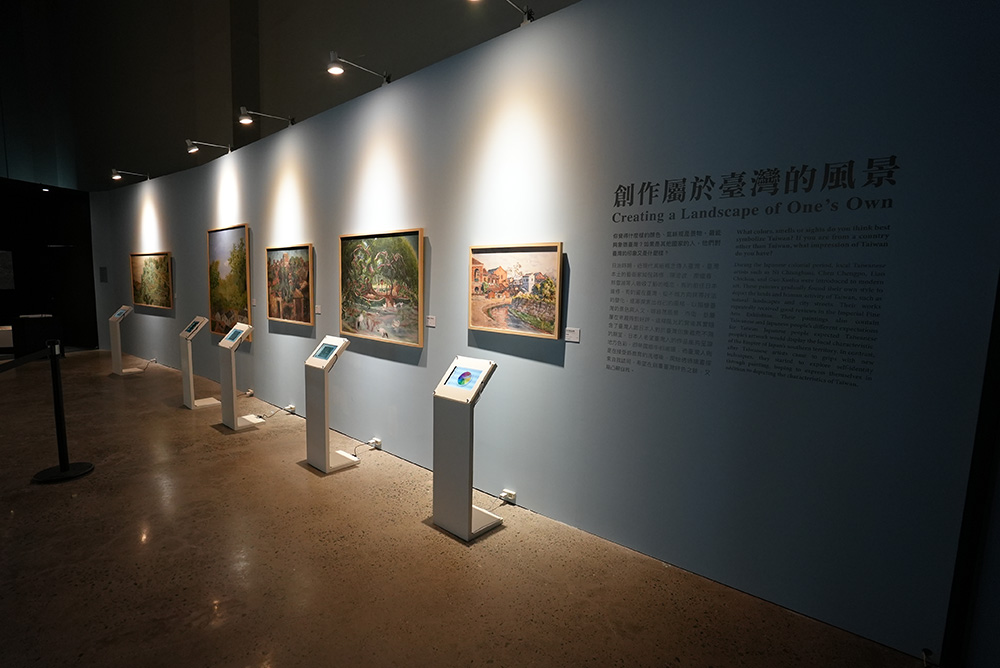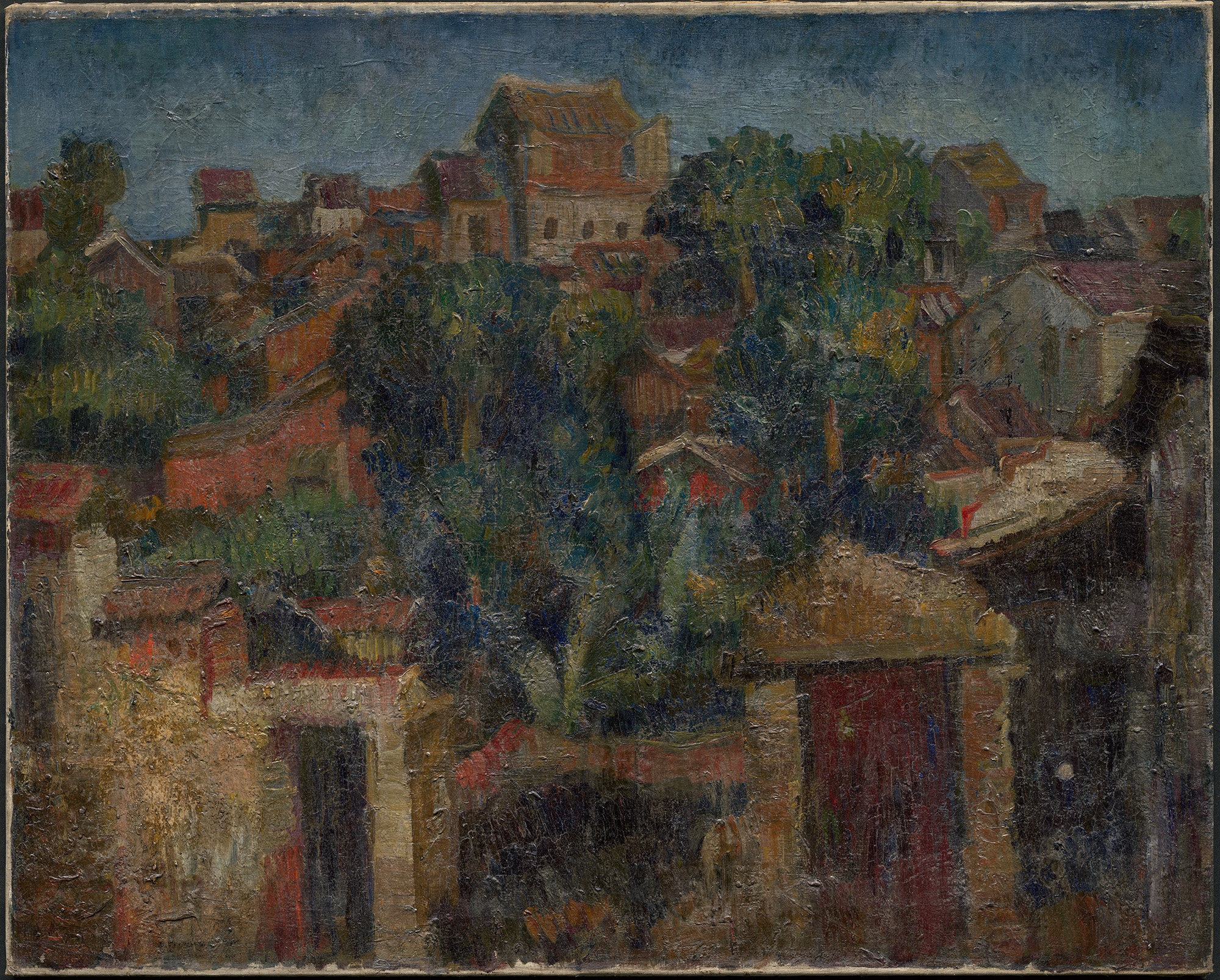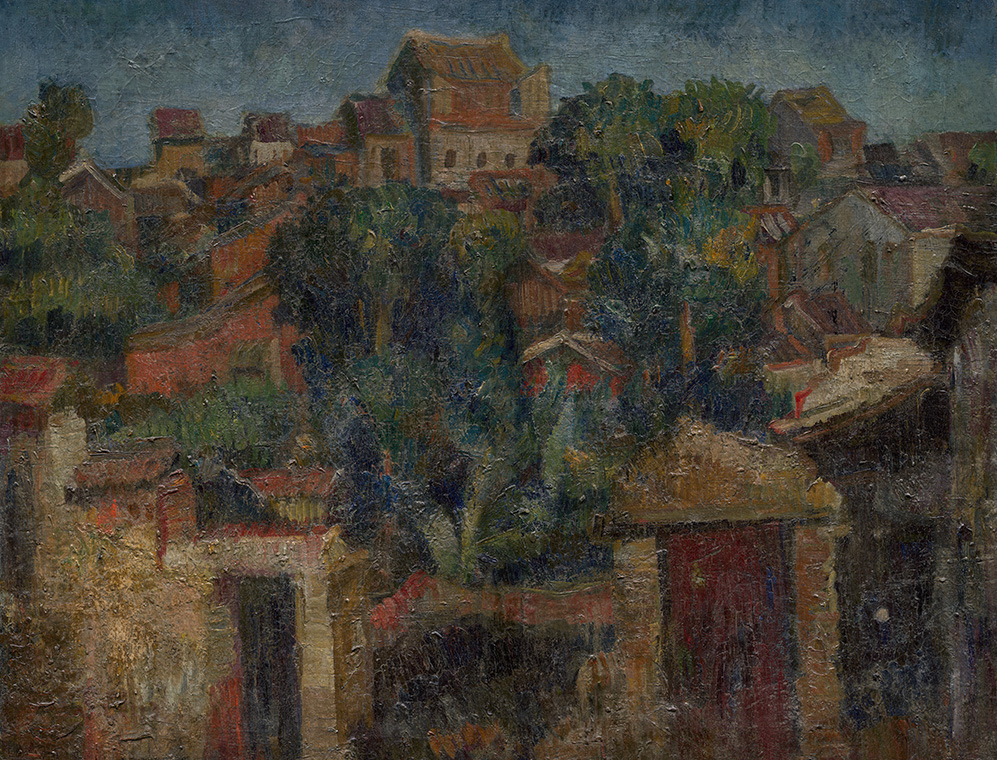Picturing Taiwan
Have you ever wondered how "landscapes" came to be?
What frame of mind and perspective do people use to look at the landscapes? How did ancient people publicize beautiful landscapes when there were no cameras, Internet and Facebook? Could the message be distorted during the circulation? In this exhibit section, we will introduce the Taiwan landscape from the perspective of different empires starting from the seventeenth century, including various viewers, such as rulers, explorers, developers, missionaries, painters, etc., who came with different purposes.
Finally, we will introduce the works of Taiwanese painters during the Japanese colonial period, and see how they depict the appearance of their hometown after they have mastered the skills of modern painting.
Creating Scenery that Belongs to Taiwan
- Landscape of Tamsui
- Dimensions: 100X80 cm
- Historical Period(s): 1930
- Maker(s)/Artist: Chen, Chih-Chi
- Collection: The Archives of Institute of Taiwan History, Academia Sinica
During the Japanese colonial period, many local Taiwanese artists were introduced to modern art. These painters gradually found their own style to depict the lands and human activity of Taiwan, such as natural landscapes and city streets. Their works repeatedly received good reviews in the Imperial Fine Arts Exhibition.Their paintings also contain Taiwanese and Japanese people's different expectations for Taiwan. Japanese people expected Taiwanese people's artwork would display the local characteristics of the Empire of Japan's southern territory. In contrast, after Taiwanese artists came to grips with new techniques, they started to explore self-identity through painting, hoping to express themselves in addition to depicting the characteristics of Taiwan.
Scenery of Freshwater was painted by Chen Zhiqi after graduating from Tokyo University of the Arts and returning to Taiwan. Tamsui was a hallowed place for painters at the time because of its beautiful natural scenery and breadth of human activity. He used the post-impressionist painter Paul Cézanne's style of layering color to depict mountainous cities in southern Europe to depict the layers of red-tiled houses in Tamsui that the Han Chinese people lived in. The painting shows the features of houses built upon undulating hills.











